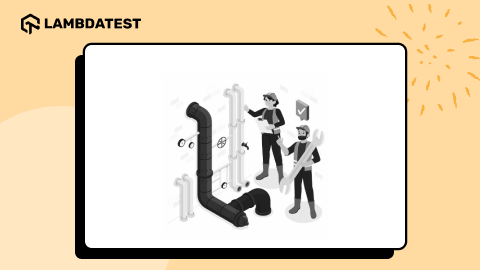Top 13 Compelling Advantages of CI/CD You Mustn’t Overlook
Rahul Jain
Posted On: September 24, 2020
![]() 45293 Views
45293 Views
![]() 10 Min Read
10 Min Read
In traditional software development approaches, releases are spread out and recur at intervals for every small feature update or bug fix. This dramatically increases the chances of changes getting coupled at the time of deployment. Over time, the problem starts to grow, posing more challenges for an entire team. The worst part is that all processes are manual, and most of these products are developed/tested individually. Needless to say, it becomes more prone to human error. CI/CD is something that solves all this and makes the entire process more manageable and efficient.
Continuous Integration/Continuous Deployment or CI/CD is the backbone of building, testing, and deploying applications to production in modern software development practices. CI/CD plays a pivotal role in bridging the gap between development and various affected teams. CI helps to mitigate the risks and enables production parity by automating multiple code changes from varied developers of the project. On the other hand, CD enables developers to deliver the integrated code to production seamlessly, thus providing a quick and effective automated process to release new features and updates to customers without much hassle.
CI/CD has now become an integral part of modern software development cycles. If you are yet to make your move about CI/CD implementation, this blog will definitely help you out in identifying the amazing benefits of CI/CD.
Top 13 Benefits of CI/CD
Without further ado, let’s now take a peek into the 13 top benefits of CI/CD pipeline in your project-
1. Superior Code Quality
One of the chief technical benefits of CI/CD is that it enhances the overall code quality. A CI/CD pipeline enables developers to integrate their code into a common repository in small batches. Through this repository, developers can share their builds with the entire team rather than working in isolation. Now, the whole team can collaborate for thorough detection and fixation of the most severe bugs.
Additionally, this helps to share stable builds more frequently, free of any critical bug, and thus bad code rarely makes it to production. That’s how CI/CD implementation simply diminishes the off-chance of buggy codes making it too far into production.
2. Reduced Changes & Review Time
Code changes in such an environment are done at an atomic level, which reduces the risk of unintended consequences. Such changes are easy to handle compared to large hefty ones and are easy to fix in case of any issues. Using CI/CD, these code changes can be tested quickly once they are integrated. Such an approach is very beneficial when direct communication is a roadblock or when teams are spread across remote locations.
Amongst other benefits of CI/CD, this is one of the most important ones. A CI environment can be integrated to communicate with a Version Control System as well. This means any change pushed to the merge triggers a CI run, automatically checking the coverage code and whether all tests are passed. This highly reduces the time spent on reviewing the changes and shipping the code.
How Professional QA Implements A Robust CI/CD Pipeline?
3. Accelerated Release Cycles
Since the elapsed time to detect and correct production, escapes are shorter; CI/CD enables accelerated release rates. Any software development system can support recurring releases only if code is developed in a continued automated testing pipeline.
CI/CD serves this purpose by continuously merging codes and deploying it to production-like systems regularly to keep the code in a release-ready state. This also enables the organization to establish a standardized delivery mechanism that runs repeated processes for each change, trusted by all.
4. Fault Detection & Isolation
Detecting the root cause of a fault and then pointing out the exact location of the fault is one of the most proclaimed benefits of CI/CD. Fault isolation refers to system design, limiting the negative results of an error by pinpointing the cause and location.
Such an approach reduces the consequences of an unresolved or undetected problem, making the system easier to maintain. This also accounts for one of the top reasons for using a CI/CD pipeline as it makes fault isolation simpler and quicker before it can affect the entire system.
5. Enhanced Test Reliability
Using CI/CD, you can improve test reliability to a great extent. Since specific and atomic changes are introduced to the system, it allows developers or QAs to add more relevant positive and negative tests for the changes. This testing is also referred to as ‘Continuous Reliability’ within a CI/CD pipeline.
It also makes code more reliable as the issues often caused by cases like it worked on my local system are prevented since the tests run locally are executed on just a snapshot of code on the local machine. Continuous integration prevents such cases by continuous testing on integrated code.
6. Reduced Backlog
By implementing CI/CD into your development process, you have the chance to decrease the number of non-critical defects in your team’s backlog. Such defects are often fixed before they become a critical issue. Any such defect is highlighted and is fixed before it makes it to production or impacts end-users.
Some other useful benefits of solving non-critical issues ahead-of-time are-
- More time for developers or QAs to focus on the big picture instead of spending their valuable time of minute issues.
- More time for QAs to find larger problems before being a product is released.
- Keeps your clients happy as they end up finding zero to none errors in your product.
Read: Best Practices Of CI/CD Pipeline
7. Improved Mean Time To Resolution (MTTR)
MTTR is the measure of reliability and maintainability of any or all the repairable features. It gives you a timeline about the average time spent taken up by recovery from a possible failure.
One of the main benefits of CI/CD is that it helps you bring down this number. Smaller code changes and quicker fault isolation play a significant role in keeping failures to a bare minimum. It also helps recover from any setback within no time as the CI/CD pipeline ensures the fix is quickly tested in integration with the whole code before deploying to production.
8. Cost Deduction
Using a CI/CD pipeline limits the potential impact and loss that a deployment problem can cause by allowing it to be deployed in non-critical business hours. Also, repeated automated deployments during the development phase help developers catch the errors early before causing any significant damage. Such a pipeline implementation increases code quality, thus increasing overall ROI for the organization.
9. Enhanced Transparency & Accountability
The benefits of CI/CD are not just limited to testing, but it can also help you assist your team in a better way. CI/CD encourages transparency and accountability for any problem amongst the team members. Continuous integration focuses on providing this benefit, as the reports generated there list down all the build failures, code integration problems, architectural bottlenecks, etc. A steady flow of these reports allows the team to analyze and fix problems to make the product even more useful.
A good CI/CD strategy means developers get the freedom to focus on essential aspects of the project without worrying about other time-consuming, minuscule tasks. They can also work confidently, knowing that errors will be caught automatically and not right before deployment.
10. Streamlined Communication
CI/CD improves overall communication and accountability between team members. It does so by becoming a common framework for all developers, QAs, and product managers working on a particular project.
For each pipeline run on a CI/CD environment, all the stakeholders are notified and kept on the same page for any changes being made and in case of any failures. This allows the product owners and developers to communicate effectively about the test results and take desired actions based on the failure’s criticality.
11. Frequent Updates & Maintenance
Regular maintenance and updates are the backbones of making a great product, and this is one of the great benefits of CI/CD. It ensures that release cycles are shorter and targeted, which blocks fewer features that aren’t ready for release. In a CI/CD pipeline, maintenance is usually done during non-business hours, saving precious time for the entire team.
Furthermore, features like toggles and blue-green deploys enable the seamless and targeted introduction of new product features by upgrading smaller units of change, which are less disruptive.
12. Boosted Customer Satisfaction
CI/CD also provides technical advantages and incorporates the ones that are essential from a business’s viewpoint. Customer-first is the foolproof business approach, and a CI/CD pipeline follows this approach. Once a product is released, it monitors the initial few actions of any new customer and keeps track of the results. This helps decide the impression of the product on the user. CI/CD implementation also enables end-user involvement and feedback during continuous development leading up to usability improvements.
Frequent software bugs can harm a product’s reputation. New features being released at periodic intervals, quick bug fixes, spontaneous response to feedback — these are some of the major reasons which attract a user to a product and decides their loyalty towards it. By using a CI/CD pipeline, the product is generally up to date in terms of technology as it is regularly checked for new updates or small changes. Thus, it helps you provide a high level of user satisfaction.
13. Enhanced Performance Metrics
Applications, in all cases, need to be monitored carefully after releases. This can be considered amongst one of the top benefits of the CI/CD pipeline as it allows you to monitor the health, performance, and reliability of an app. Monitoring these metrics help in creating actionable insight and taking necessary actions to improve the product.
These metrics are also important as the software is nowadays developed and deployed quickly, thanks to CI/CD pipelines, and hence their behavior becomes somewhat unpredictable at times. CI/CD provides metrics data in operational, time-based, and quality metrics, which is very useful in making things better.
Wrap-up
Now that you know the top benefits of implementing a CI/CD pipeline, it is time to make the switch. If you have been on the lam about implementing a CI/CD pipeline, you can definitely move ahead. It has proven to be very beneficial for top organizations across the world, and it will be worth the while for you.
Just a few things to keep in mind- the more steps your CI/CD pipeline has, the more benefits can be reaped. It will automatically boost up the speed and the quality of your releases. Remember, these benefits are not limited to business and impact stakeholders and end-users as they lead to reduced costs and better ROI.
Implementing Selenium test automation with CI/CD, organizations can invest more time in building sustainable products, thus streamlining the process and making more compatible apps. The best way to do this is by moving to a cloud-based platform like LambdaTest and moving all your testing processes online. You will get to perform cross browser testing for your products on 3000+ browsers, operating systems, and devices.
Ready to transform your software delivery process? Check out our CI/CD Testing guide, featuring its significance, principles, and best practices.
Get started. Happy testing!
Got Questions? Drop them on LambdaTest Community. Visit now














